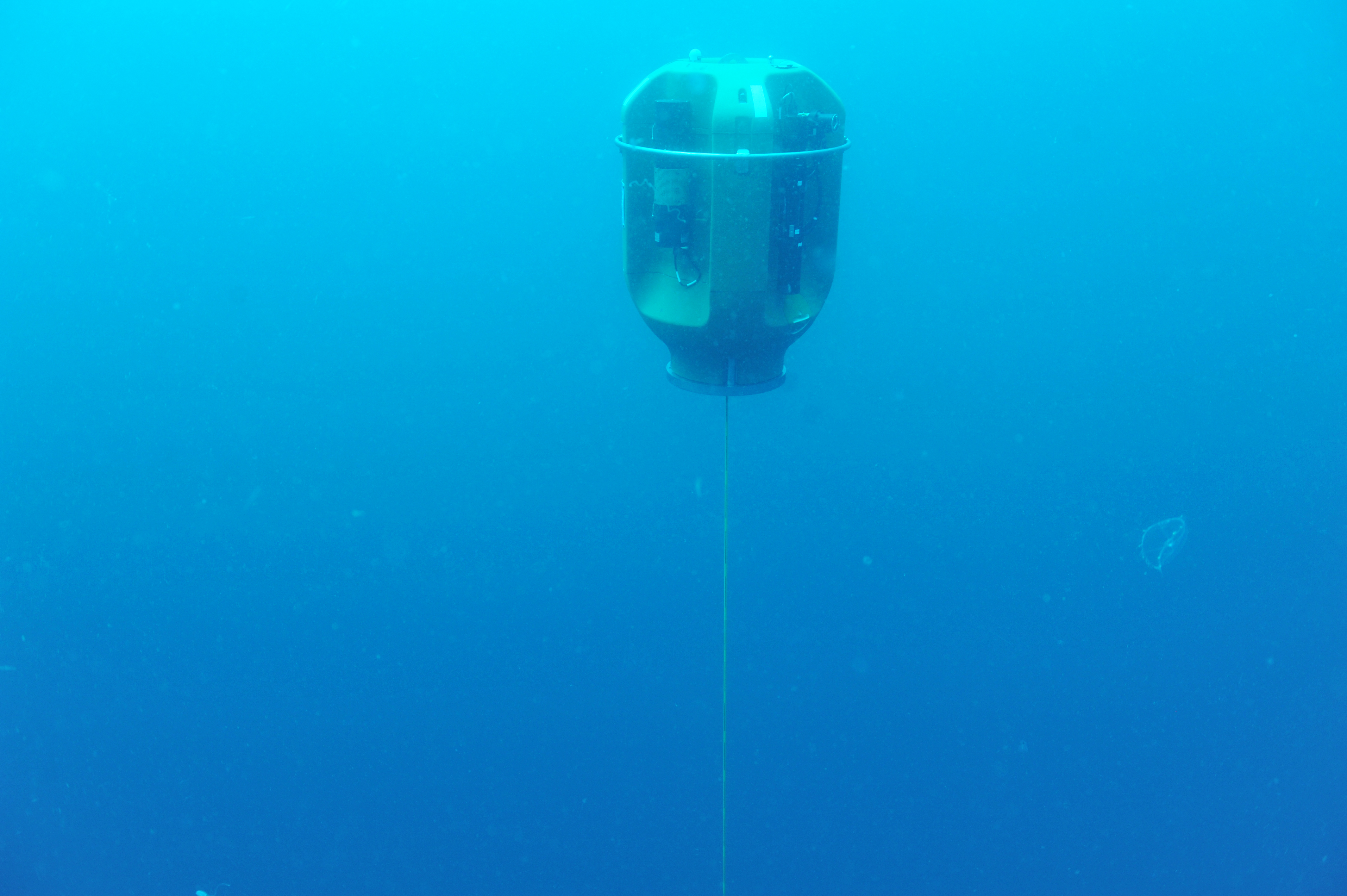The pCO2 sensor measures the partial pressure of carbon dioxide (pCO2) from 150-700 μatm in the upper 200 m of the water column on the Shallow Profiling Moorings at the Slope Base, Endurance Offshore, and Axial Base sites, and on the Benthic Experiment Platforms at the Oregon Shelf and Offshore sites. The sensors are provided by Sunburst – SAMI – pCO2. Water samples collected during CTD casts prior to and after installation are used to verify the instruments. Over 27,000 profiles have been made with the Science Pod on the Shallow Profiler moorings since 2015, providing high resolution data on changes in pCO2 concentration on daily to yearly time scales.
The distribution of pCO2 is dependent on: (1) increases due to gas exchange with the atmosphere at the ocean surface, (2) removal by photosynthesis, (3) removal by calcium carbonate formation, (4) removal by solar heating, (4) increases from breakdown of plant material by microbial processes, and (5) addition due to dissolution of calcium carbonate. Calcium carbonate minerals are the building blocks for the skeletons and shells of many marine organisms, such as oysters. Carbon dioxide concentrations are increasing in the atmosphere due to the use of fossil fuels. Currently, the increase in atmospheric CO2 is about 30 times higher than at anytime in the past geological history of the Earth. The oceans are absorbing about 30% of the atmospheric CO2, resulting in a shift in seawater acid-base chemistry and a decrease in ocean pH (more acidic). These chemical changes are termed “ocean acidification”.

